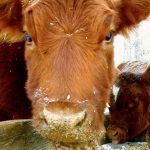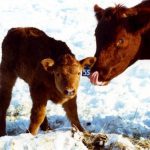
Light barley: To buy or not to buy?

When the cows come home: Fall and winter feeding considerations
Whatever strategy you choose to implement, each has advantages and drawbacks

The science of fibre in diets for finishing cattle

Making hay when the sun isn’t shining

Transitioning yearlings to pasture

Now is the time to prevent feed shortages

Post-calving nutrition to maximize conception rates
Evaluating body condition score can be difficult and requires training

Demystifying near-infrared spectroscopy
Unpacking how this technology works and how it can used to analyze forage, feed and feces

Optimizing wheat grain use in feedlot diets
Researchers explore whether processing wheat can reduce its potential to cause digestive upsets, and allow feedlots to use this high-protein, high-energy feed

Turning weeds into feed
A variety of noxious weeds have been deemed as safe alternative forages for cattle



